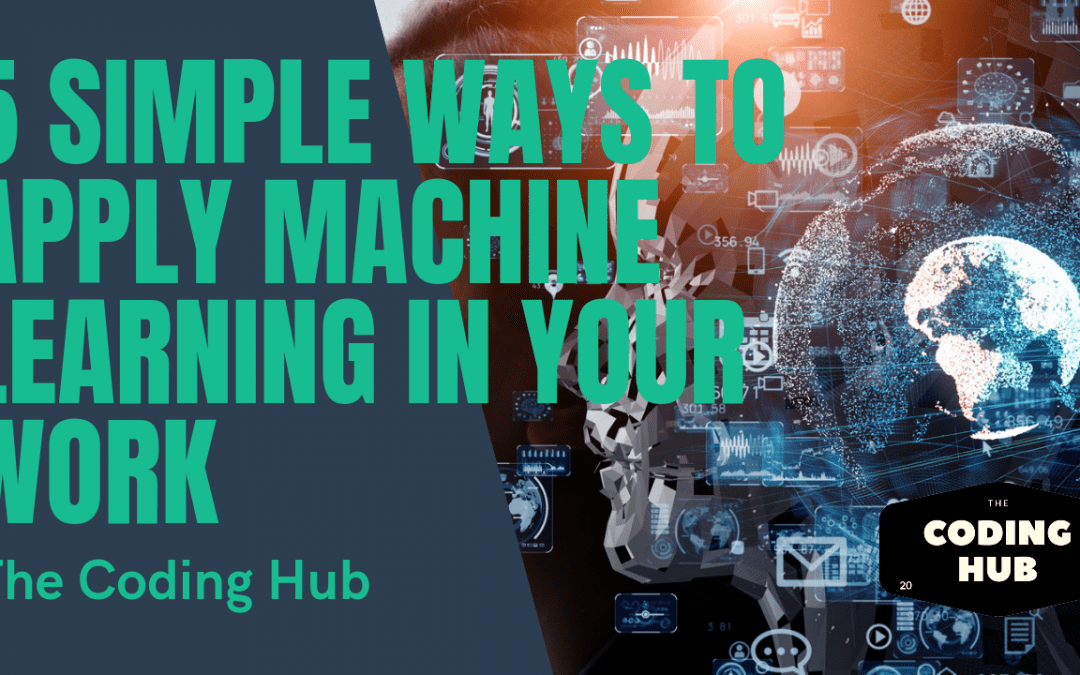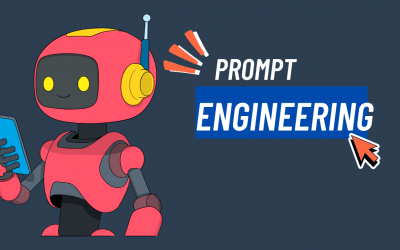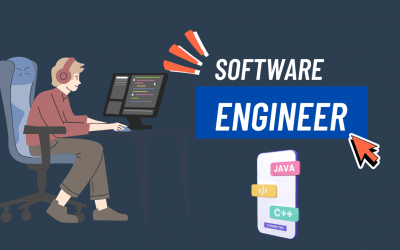If you’re reading this, there’s a very high chance that you work in IT. The good news is that working with computers and software is something that many people are doing every single day. That means it’s also something that plenty of other people will be doing soon too! So what does this mean for you? It means that there are more opportunities than ever before to apply your technical skills in areas that aren’t computer science but are still related. In this article we’ll be exploring 5 simple ways to apply machine learning in your work.
Graphical User Interface (GUI) Automation
Let’s start with a very basic concept that might seem a little bit strange at first. The GUI, or Graphical User Interface, is the intersection of humans and computers. It’s the interface you use to accomplish tasks like installing software, adding files to folders, copying/moving/ deleting files, and much more. There are lots of different GUI tools and systems out there, but in many cases they’re very limited. For example, if you want to automate the installation of software, you’re forced to use a GUI tool that’s meant to assist in that task. So, imagine how powerful it would be if you could do it with just text commands! You could then use that power to automate many other tasks too.
Predictive Maintenance
One trend that we’re starting to see more and more of is the predictive maintenance of physical assets. This can be seen in many ways, like the intelligent scheduling of maintenance jobs, or the predictive scheduling of outages. In many cases the maintenance itself has been completely automated, and often the predictive maintenance is able to predict maintenance issues before they even happen. One great example of this is the predictive scheduling of outages. In many cases, you’ll have a physical asset (like a building or a machine) that’s going to need maintenance at some point in the future. With traditional scheduling tools, the maintenance always happens when you want it to happen, and you don’t have much control over the exact times or hours. With predictive maintenance, you can set up the system to look at the asset’s usage and predict when that usage is going to increase. It can then then schedule the maintenance such that there’s no impact on the user.
Smart Chatbots
Chatbots have quickly become one of the most popular forms of artificial intelligence out there, and for good reason! If you have a business that uses social media for marketing and customer service, you’re going to need a way to handle those conversations. While there are many ways to build a bot, one of the most popular is the use of a chatbot. A chatbot is like a digital assistant that you can interact with through social media. You can ask it about different topics or search for information, and it’ll respond with answers or links. There are also many commercial solutions that enable you to build bots that can work onsite and integrate with your security systems, email, and more. One of the best ways to use chatbots is to enable bots that can be used by your customers. For example, if you have a rental property, you can enable bots that allow your renters to chat with you about any concerns they might have. You can also use this same functionality to enable bots that allow your guests to chat with you about upcoming events or other details that might be useful to you.
Collaborative Robots
Robotics is quickly becoming one of the most popular forms of artificial intelligence, and for good reason. In many cases these robots are being used for heavy lifting duties, but they’re also starting to be used for more intelligent tasks like medical assistance and disaster relief. One growing trend is the use of collaborative robots. This type of robot usually consists of multiple computers and sensors that allow it to work alongside humans. Some of the most popular uses of collaborative robots include manufacturing, logistics, and construction. In many cases this type of robot uses deep learning and other machine learning techniques in order to make decisions. One great example of this is in the manufacturing world. Many factories use robots to automate production, but they also typically use humans to oversee production and make sure that everything is running smoothly. With collaborative robots, you can use AI to make decisions and then send notifications to humans so that they can take action on those decisions.
Self-Driving Cars
A self-driving car is becoming a very popular form of artificial intelligence. These cars are typically autonomous, meaning that they’re not controlled by a human. In many cases these cars are being used for transportation, but they can also be used for logistics and commercial uses. One great example of AI in a self-driving car is the use of image recognition. This is a common type of machine learning technique that’s used in self-driving cars. It allows autonomous cars to identify different objects like pedestrians, stop signs, and more. It’s also used to navigate through cities and navigate through the roads properly. Self-driving cars are quickly becoming popular, and there are a growing number of manufacturers and services that are enabling this type of AI in cars. If you’re interested in applying AI in transportation, it’s important to research the different options and see what works best for your organization.
Wrapping Up
As you can see, artificial intelligence can be applied in a wide variety of ways. Some tasks are more complicated than others, but with the right tools and skills they can all be accomplished. As the use of AI grows, so will the demand for people who are able to apply these technologies. In this article, we’ve explored some great ways to apply machine learning in your work. If you’d like to learn more, consider taking one of our online AI courses — they’ll give you a great overview of the different areas of AI and show you how to apply it in your work.
Other Articles
The Art and Science of Prompt Engineering: Crafting the Future of AI Interaction
Beyond Keywords – Defining Prompt Engineering We stand at the precipice of a new paradigm in human-computer interaction. The rise of sophisticated Large Language Models (LLMs), such as GPT-4 and its contemporaries, has shifted our communication with technology from...
What is a Software Engineer
The Architects of Digital Reality Software engineers constitute the fundamental workforce orchestrating our technologically mediated existence. These professionals transmute abstract concepts into functional applications that permeate every facet of contemporary life....
Angular TypeScript: A Comprehensive Guide to Modern Web Development
Introduction to Angular TypeScript Integration Angular's symbiotic relationship with TypeScript represents a paradigmatic shift in modern web development methodologies. This powerful amalgamation emerged from Google's recognition that large-scale applications require...




